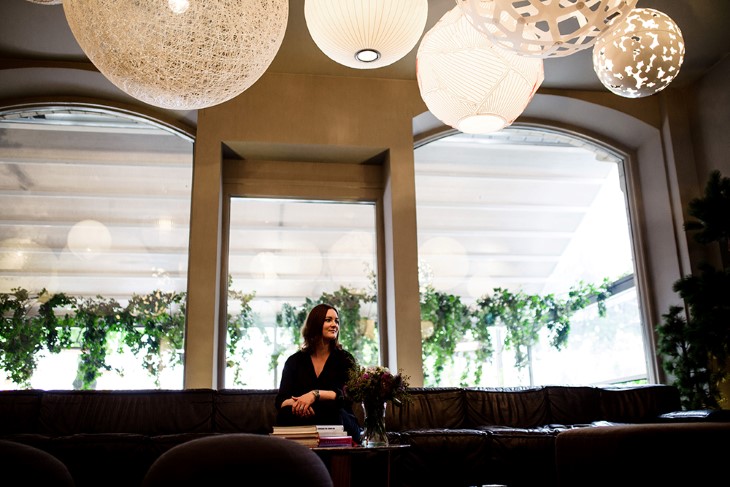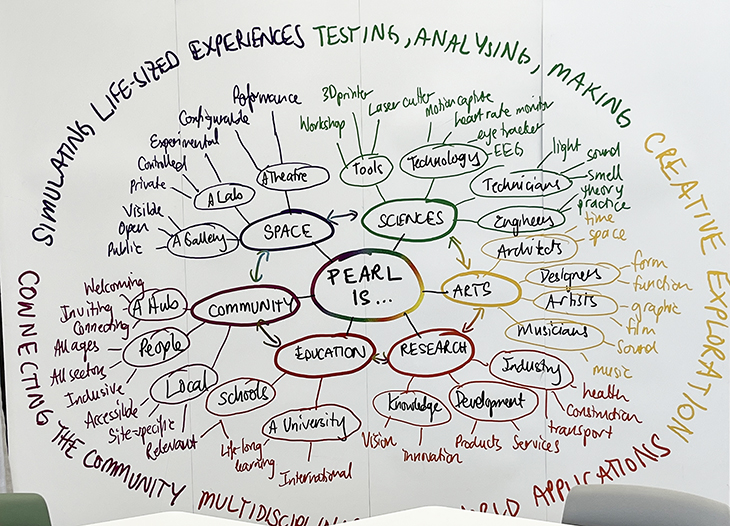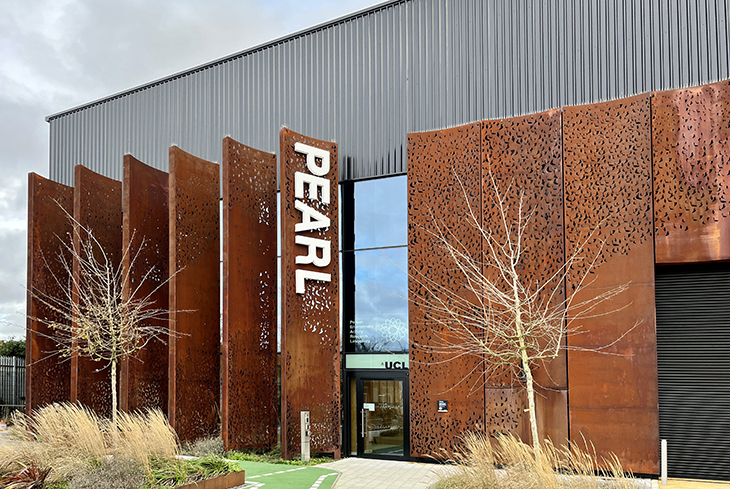Kährs starts five-year research collaboration in the field of Neurodesign
How does the floor affect us humans and what happens in the brain in different built environments?
"The brain is the most complex structure in the known universe and absolutely crucial for how we think, feel, and perform in our lives."
Kährs starts five-year research collaboration in the field of Neurodesign
How does the floor affect the human experience and what happens in the brain in response to different built environments? How can room design promote healing, learning and creativity? Kährs is starting a five-year research collaboration in this interdisciplinary field called Neurodesign, with Isabelle Sjövall, who will complete her doctorate in Neurodesign over the next five years – the first person in the world to do so.
Neurodesign investigates how the brain reacts and responds to built environments and how people are affected psychologically and physiologically by design. In her research, Isabelle will study educational environments, healing environments, living environments, and office environments. Among other things, she will examine the role of the floor in different environments in combination with other components such as lightning, furniture, colors, shapes and materials.
The studies intend to use different floors from Kährs. In its wide range of floors, Kährs has products for the different types of environments in which Isabelle will be researching. Kährs aims to apply this research-based knowledge in future innovation and product development of floors so that they even better contribute to environments that promote health, performance, and well-being.
"Some knowledge on the subject already exists, but some pieces of the puzzle are missing. We hope that the research project will give us facts about how different elements in a room affect people and thus provide keys to the flooring of the future." says Sara Olofsson, CCO, Commercial Sales at Kährs.
"I am incredibly happy to have Kährs as a partner in this world-unique research project. Our shared knowledge creates exciting opportunities to jointly contribute to new insights and innovations that promote all aspects of sustainability: human, ecological and financial," says Isabelle Sjövall.
Photos of Isabelle Sjövall: Jenny Hammar
A chat with Isabelle

Tell us about your research?
My research is based at the Faculty of Brain Sciences, Institute for Behavioural Neuroscience, University College London (UCL), a world-leading research university. The research focus is how design affects cognition, creativity and wellbeing, and which components and combinations that can affect people in a positive direction. I will investigate many different parts of the built environment from a multisensory perspective such as materials, tactility, colors, shapes, light and biophilic design. The aim is to contribute to new research-based knowledge that can be applied in future environments to promote health, performance, and wellbeing.

What is so exciting about your research?
- The brain is the most complex structure in the known universe and absolutely crucial for how we think, feel, and perform in our lives. And although the world around us has developed at a rapid pace, the brain has not changed significantly for many tens of thousands of years! It is still designed for a life in the savannah, the original environment for which our brains once evolved. From that perspective, I think finding explanations based on our biology is incredibly exciting. It also allows us to learn what kind of design to surround ourselves with to improve our quality of life and make smarter and more conscious choices.
You will be conducting your research at the PEARL lab, tell us a little more about that?
- PEARL, which stands for Person-Environment-Activity Research Laboratory, is a new state-of-the-art world-unique research laboratory in London and part of research powerhouse UCL. The laboratory has a floor span of about 4,000 m2 and specialises in measuring how people react to and interact with their surrounding environment.
-Getting the unique chance to use PEARL in my research is a key strength because it is incredibly rare to have the opportunity to carry out empirical experiments in a controlled laboratory environment large enough to build up different types of environments and scenarios in the laboratory. This type of state-of-the-art laboratory together with high-tech brain imaging technology that we also have access to within UCL, creates fantastic opportunities to explore how the brain reacts and responds to different types of exposure, stimuli, and design factors.
About Isabelle
Isabelle is a neurodesigner, author, and cognitive scientist with more than 15 years of practical experience with advanced projects in architecture, design, and the property industry.
-I balance my time between scientific research and industry because I strongly believe in collaboration between different fields in order to achieve positive development with a higher purpose.
-My educational background is multidisciplinary, and I have studied economics at the Stockholm School of Economics, architecture and design in Florence, Italy, and neuroscience, psychology and mental health at the Institute of Psychiatry, Psychology and Neuroscience, at Kings College London. Now I will be the first person in the world to receive doctorate in the new interdisciplinary field of Neurodesign, which investigates how the brain reacts and responds to built environments, and how people are affected psychologically and physiologically by conscious design choices.


